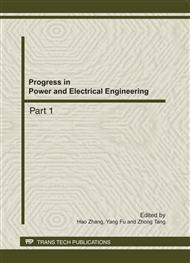p.669
p.674
p.679
p.684
p.691
p.696
p.703
p.707
p.711
Numerical and Experimental Studies on the Supersonic Coaxial Jet Mixing
Abstract:
Coaxial nozzles are an integral part of many engineering systems where mixing of different fluid streams is required. Single noncircular nozzles have been shown to have better mixing characteristics than their axisymmetric counterparts. Therefore, a combination of such nozzles into coaxial configurations is promising. The aim of the present study is to quantitatively determine the effects of the geometry of the primary supersonic jet on the mixing characteristics with the secondary high speed subsonic jet. Measurements of pressure profiles at several positions along central axis of jets using identical facilities and nominally identical experimental conditions were done. The mixing is dominated by the vortex structures that are present in the inner shear layers. The interaction of the vortex structures govern the growth, and entrainment, and mixing of the jet. Also, the experimental results show that the radial and centerline pressure profiles through various coaxial jets has good correlation with the CFD simulation.
Info:
Periodical:
Pages:
691-695
Citation:
Online since:
October 2011
Authors:
Price:
Сopyright:
© 2012 Trans Tech Publications Ltd. All Rights Reserved
Share:
Citation:


